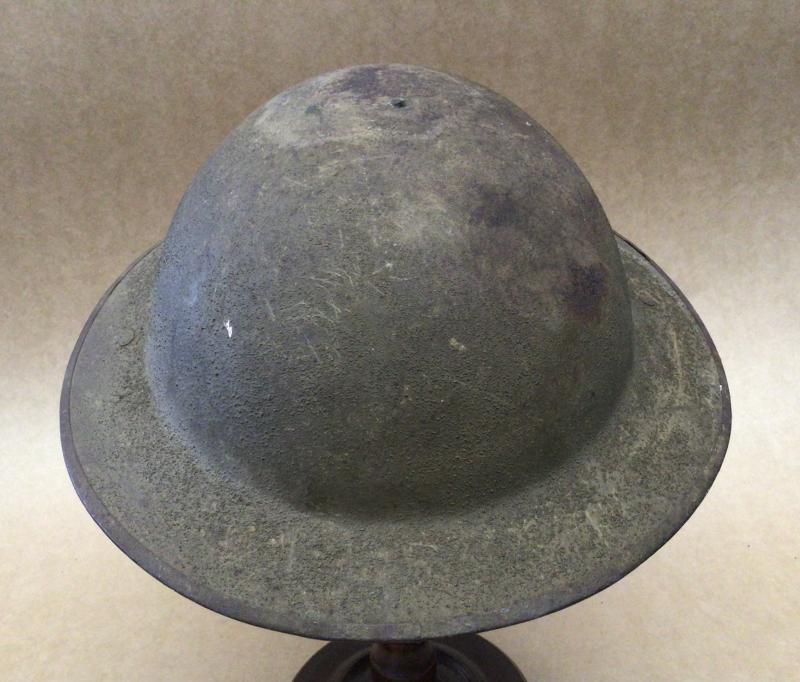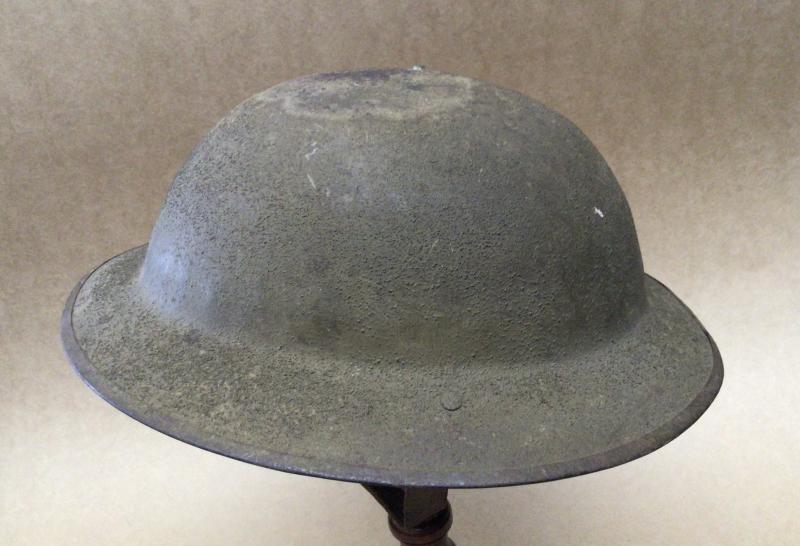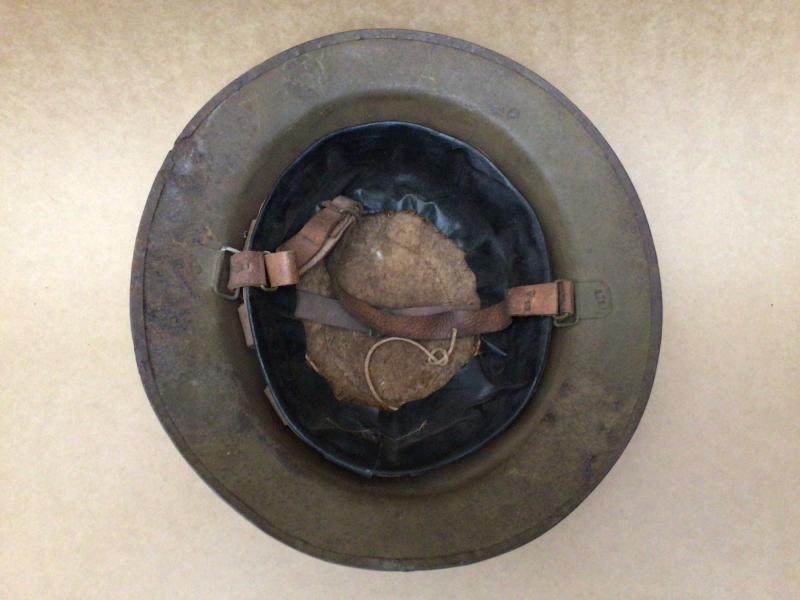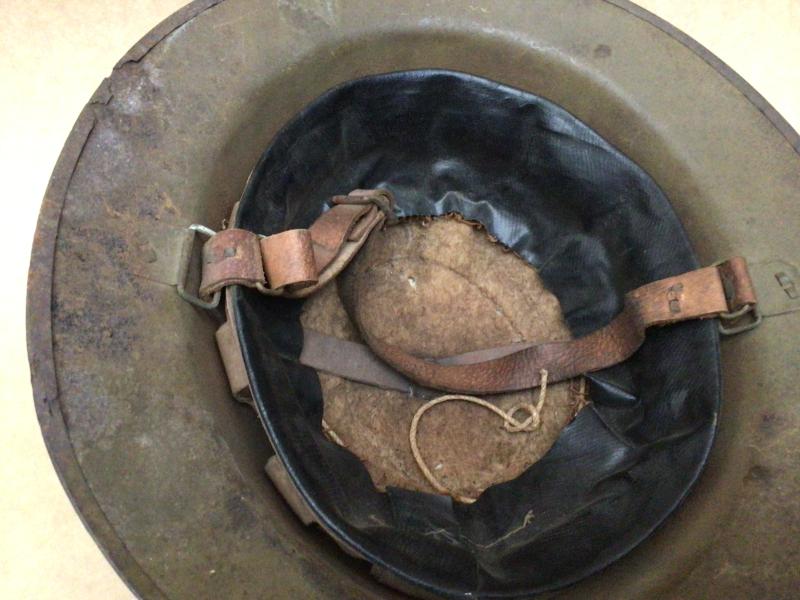British WW1 MkI Brodie Steel Helmet
A fine example with khaki sand grit finish. Water stain to the top and some rust/pitting to the right hand of the brim underside near the chinstrap.
Has original brown leather chinstrap and oilcloth/felt liner.
Bowl-shaped steel helmet, green painted, featuring a wide brim of simple pressed construction fitted with edging to the rim. The liner is of MK I pattern, comprising two part construction of an oval crown pad of lint, asbestos, and felt, and an American cloth tongueless headband padded with cotton wool, lint and canvas (to the underside) and attached to a netted head band support. To the outside of this support (between the skull cradle and the helmet shell) is attached a series of 12 tubular-shaped rubber buffers. A complex leather chinstrap system is fitted on top of the oval pad and threads down either side of the liner, being passed through two rectangular wire bales, one either side of the rim, and coupled to a second strap that is the chinstrap proper, that features a single-prong metal buckle. The entire two-piece liner and pad are held fast to the crown of the helmet shell by a single copper rivet that passes through the leather strap and pad.
The original and very distinctive steel helmet adopted by Great Britain was designed and patented in 1915 by its inventor, John L Brodie. After many experiments, Brodie came to the conclusion that a relatively simple form of helmet would offer reasonable protection, be serviceable and cheap to produce in large numbers. In comparison with both the French Adrian pattern helmet (1915) and the German M1916, the British helmet proved light, robust, simple to make and, for its time, was highly effective. The first helmets were produced at the Sheffield steel works of Sir Robert Hadfield who had pointed out the the many virtues of a high percentage (12%) manganese steel. This alloy, rolled in sheets of 20 gauge or .036 inch, would resist pistol bullets of 230 grains jacketed with cupro-nickel, travelling at the rate of 600 feet per second. Such a bullet caused a deep dent in the helmet but did not penetrate. Moreover, if at higher velocity the projectile passed through the plate, no shattering or splintering occurred. The helmet made its first appearance in any numbers at the Battle of the Somme in July 1916. The overall shape, with modifications, and changes to the liner and finishes, remained in service with British and Commonwealth forces until the end of the Second World War. The same shape of helmet was used during the Second World War by all services and by the Police, Fire Services and ARP Services. The Brodie 'tin hat' was a masterpiece of simple design and its shape became instantly identifiable.
History note
By March 1916, some 140,000 helmets (Type 'A', 'B', and 'War Office' pattern) had been issued to troops serving on the Western Front, but being as they were regarded as "trench stores" issue was very limited and there were not enough to enable soldiers to claim their own personal issue. Medical evidence had confirmed the value of the shrapnel helmets as severe heads wounds had decreased amazingly, therefore production was urged to speed up, but prior to this, those helmets that had been evaluated under field conditions had highlighted some criticism, including that the paint finish was too shiny; the helmet was too round and shallow; the liner was slippery, and that the edge of the brim was sharp and could cause injury. To counter this, a new liner and chinstrap assembly was devised; edging applied to the rim, and a non-reflective textured paint would be used. 1,000 modified helmets were then sent for front line evaluation and these were initially approved by 15th May, 1916, and given full approval in July by which time 1,000,000 were in service. By September of that year the new helmet was known as the "Helmet, Steel, Mark I".
Code: 339
750.00 AUD






